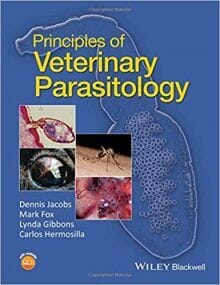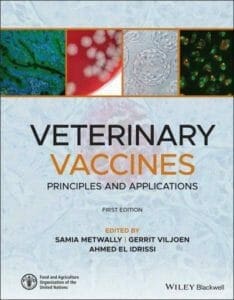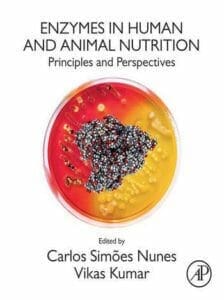About the authors ix
Foreword x
Preface xi
Acknowledgements xii
List of abbreviations xiv
About the companion website xv
1 Veterinary Parasitology: basic concepts 1
1.1 Introduction 1
1.1.1 What is Veterinary Parasitology? 2
1.2 Parasitism and parasites 2
1.2.1 Parasitism 2
1.2.2 Classification 3
1.2.3 Host–parasite relationships 4
1.3 Host–parasite interactions 6
1.3.1 Host defences 6
1.3.2 Parasite evasion of immunity 9
1.4 Parasitic disease 10
1.4.1 The host–parasite balance 10
1.4.2 Why parasites are important 10
1.4.3 Pathogenic mechanisms 11
1.5 Diagnostic techniques 12
1.5.1 Direct detection methods 12
1.5.2 Indirect detection methods 13
1.5.3 Limitations 16
1.6 Treatment and control 16
1.6.1 Key concepts 16
1.6.2 Chemotherapy 17
1.6.3 Resistance to parasiticides 18
1.6.4 Integrated parasite management 19
1.6.5 Vaccination 19
1.6.6 Alternative technologies 21
1.6.7 Concluding remarks 23
2 Arthropods part 1: introduction and insects 25
2.1 Introduction 25
2.2 Insects 26
2.2.1 Key concepts 26
2.2.2 Fleas (Siphonaptera) 32
2.2.3 Lice (Phthiraptera) 36
2.2.4 Bugs (Hemiptera) 39
2.2.5 Biting and nuisance flies (Diptera) 40
2.2.6 Myiasis-producing dipterans 48
3 Arthropods part 2: ticks, mites and ectoparasiticides 57
3.1 Introduction 57
3.2 Ticks 57
3.2.1 Key concepts 57
3.2.2 Hard ticks (Ixodidae) 62
3.2.3 Soft ticks (Argasidae) 65
3.3 Mange mites 65
3.3.1 Key concepts 66
3.3.2 Subsurface mites 66
3.3.3 Surface mites 69
3.4 Other arthropods 74
3.5 Ectoparasiticides 75
3.5.1 Key concepts 75
3.5.2 Some important ectoparasiticides 77
3.5.3 Insect growth regulators 79
3.5.4 Problems with ectoparasiticides 79
4 Protozoa (single-celled parasites) 81
4.1 Introduction 81
4.2 Key concepts 82
4.2.1 Classification 82
4.2.2 Locomotion 82
4.2.3 Nutrition 84
4.2.4 Transmission 84
4.2.5 Reproduction 84
4.3 Ciliates 84
4.4 Amoebae 85
4.5 Flagellates 86
4.5.1 Haemoflagellates 86
4.5.2 Other flagellates 90
4.6 Coccidia 94
4.6.1 General characteristics 94
4.6.2 Eimeria 95
4.6.3 Coccidiosis 98
4.7 Tissue cyst-forming coccidia 99
4.7.1 Sarcocystis 100
4.7.2 Besnoitia 102
4.7.3 Toxoplasma 103
4.7.4 Neospora 106
4.8 Blood-borne apicomplexans 107
4.8.1 Babesia 108
4.8.2 Theileria 112
4.9 Cryptosporidia 113
4.9.1 Cryptosporidium parvum 113
4.9.2 Avian cryptosporidiosis 114
4.10 Antiprotozoal drugs 115
4.10.1 Key concepts 115
4.10.2 Anticoccidial drugs 115
5 Platyhelminthes (‘flatworms’) 117
5.1 Introduction 117
5.2 Cestodes 118
5.2.1 Key concepts 118
5.3 Cyclophyllidean tapeworms 119
5.3.1 Cyclophyllidean life-cycle 119
5.3.2 Metacestodes 121
5.3.3 Taenia 122
5.3.4 Echinococcus 126
5.3.5 Other cyclophyllidean tapeworms 130
5.4 Pseudophyllidean tapeworms 133
5.4.1 Pseudophyllidean life-cycle 133
5.4.2 Important pseudophyllideans 133
5.5 Cestocidal drugs 135
5.5.1 Praziquantel 135
5.6 Trematodes 135
5.6.1 Digenean trematodes 136
5.6.2 Fasciola 138
5.6.3 Other digenean trematodes 142
5.7 Flukicidal drugs 145
5.7.1 Benzimidazoles 146
5.7.2 Salicylanilides 146
6 Nematoda (‘roundworms’) part 1: concepts and bursate nematodes 147
6.1 Introduction 147
6.2 Key concepts 147
6.2.1 Recognition features 148
6.2.2 General biology 152
6.3 Bursate nematodes 153
6.3.1 Bursate superfamilies 153
6.3.2 Trichostrongyloidea 159
6.3.3 Strongyloidea 164
6.3.4 Ancylostomatoidea (hookworms) 171
6.3.5 Metastrongyloidea (lungworms) 173
7 Nematoda (‘roundworms’) part 2: nonbursate nematodes and anthelmintics 181
7.1 Nonbursate nematodes 181
7.1.1 Nonbursate superfamilies 182
7.1.2 Rhabditoidea 182
7.1.3 Ascaridoidea (ascarids) 184
7.1.4 Oxyuroidea (pinworms) 192
7.1.5 Spiruroidea and Filarioidea 193
7.1.6 Trichinelloidea 200
7.2 Other parasitic worms 205
7.2.1 Acanthocephala 205
7.2.2 Leeches 206
7.3 Anthelmintics 207
7.3.1 Levamisole group 207
7.3.2 Macrocyclic lactones 208
7.3.3 Benzimidazoles 209
7.3.4 Newer chemical groups 211
8 Clinical parasitology: farm animals 213
8.1 Introduction 213
8.2 Ruminants 213
8.2.1 Digestive system 214
8.2.2 Respiratory system 225
8.2.3 Cardiovascular system 228
8.2.4 Integument 230
8.2.5 Other body systems 235
8.3 Pigs (swine) 237
8.3.1 Internal organs 238
8.3.2 Integument 240
8.4 Poultry 241
8.4.1 Internal organs 242
8.4.2 Integument 246
9 Clinical parasitology: companion animals and veterinary public health 249
9.1 Equine parasitology 249
9.1.1 Digestive system 249
9.1.2 Respiratory and circulatory systems 254
9.1.3 Integument 255
9.1.4 Other body systems 260
9.2 Small animal parasitology 261
9.2.1 Digestive system 261
9.2.2 Respiratory and circulatory systems 264
9.2.3 Integument 268
9.2.4 Other body systems 273
9.3 Veterinary public health 274
9.3.1 Food-borne zoonoses 274
9.3.2 Environmental zoonoses 278
References 285
Index 287
















![Ettinger’s Textbook of Veterinary Internal Medicine 9th Edition [PDF+Videos] Ettinger’s Textbook of Veterinary Internal Medicine 9th Edition [True PDF+Videos]](https://www.vet-ebooks.com/wp-content/uploads/2024/10/ettingers-textbook-of-veterinary-internal-medicine-9th-edition-100x70.jpg)

![Textbook of Veterinary Diagnostic Radiology 8th Edition [PDF+Videos+Quizzes] Thrall’s Textbook of Veterinary Diagnostic Radiology, 8th edition PDF](https://www.vet-ebooks.com/wp-content/uploads/2019/09/textbook-of-veterinary-diagnostic-radiology-8th-edition-100x70.jpg)






